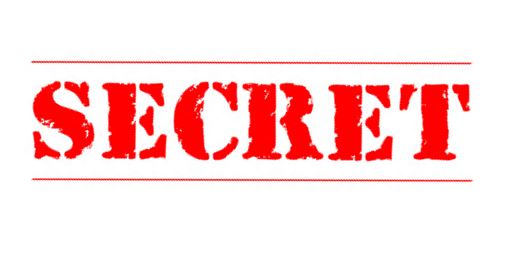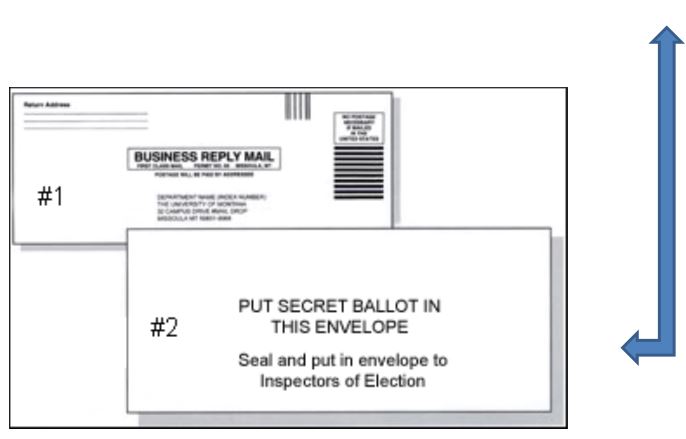
Sssshhhhh – It’s Secret.
Ohhhhh yeah, it’s that time of year again – the nip of fall in the air, cooler nights, hot cocoa, flannel, and annual meetings.
I don’t know about you, but many of us have had to make a number of adjustments over the course of the Coronavirus pandemic, including how to conduct an association election via mail by written ballot. And, to make things even more difficult, how to conduct this vote by secret written ballot, if secrecy is required due to the election being contested.
Written ballot voting enables owners to make decisions without a meeting being called. It’s a mechanism that is currently, and frequently, being used by associations due to their inability to conduct a secret vote during the virtual annual meeting (if the association is conducting a virtual meeting). This is because many virtual meeting platforms do not allow for secret voting.
By the way, if you are conducting virtual meetings, we strongly recommend you have a virtual meeting policy in place. See additional resources at the end of this blog.
In order to comply with C.R.S. §7-127-109 of the Colorado Revised Nonprofit Corporation Act, written ballots must contain the following:
- State each proposed action (what is being voted on), and
- Provide an opportunity to vote for or against each proposed action (a yes or no, for example). However, if the written ballot is being used to elect directors, then you do not need to state “for” or “against” each candidate. Instead, simply state the name of the candidates, add blanks for write-in nominees, and allow the owner to mark his or her preferred candidate(s) for the elections.
A solicitation letter must be sent with each written ballot. The solicitation letter has to include the following:
- The number of responses needed in order to meet quorum (state how many ballots must be returned to meet quorum, do not just state the percentage);
- The percentage of approvals necessary to approve each matter (however, this is unnecessary for the election of directors; simply describe how the “winner” is selected, e.g. “the 2 candidates with the most votes will be elected”);
- The date AND the time by which the ballot must be returned in order to be counted; and
- Written information regarding the persons or actions being voted upon such that each voter can make an informed decision regarding his or her choice (we recommend including the information that you would have presented at an in-person meeting had you been able to have one).
Once you have the ballots and the solicitation letters ready, the next challenge lies in creating a voting process that maintains the secrecy of the written ballot. Perhaps the most utilized way is the same way we regularly vote in Colorado – the double envelope method. Here’s how the association should proceed:
- Mail or deliver the ballots (with the solicitation letter), an instruction sheet, and two envelopes to all eligible voters.
- One envelope should be blank on the exterior or state something like “Secret Ballot Envelope”.
- The other envelope, which is the return envelope, should be pre-addressed (and stamped, if you want to make it really easy on the voter!) to the individual designated to collect the ballots by the association. This envelope should also contain the owner’s information (name, address, and signature) in the return address portion of the envelope. This is how the individual designated to collect the ballots will be able to verify that the enclosed ballot is being cast by an owner in the community.
- The ballot, itself, must not contain any type of identifying information or signature line for the owner since we do not want the disclosure of identifying information.
- Once the owner completes the ballot, he or she will place it into the Secret Ballot Envelope and seal that envelope. The owner should not make any type of identifying marks on the Secret Ballot Envelope (no owner name, address, street name, or any other information that would identify the owner).
- The owner will then place the sealed Secret Ballot Envelope into the return envelope and seal that envelope.
- The owner will then mail, or otherwise deliver, this packet, pre-addressed, to the individual designated to collect the ballots.
- Following the deadline date and time for receipt of ballots, the designated individual will open all of the outer envelopes (those with the owner addresses on them) and mark off each owner who has voted. The outer envelopes should be retained separately in case there is ever a question as to who submitted ballots. The sealed inner envelopes should be placed in a separate pile that will be opened and ballots counted.
- For those visual learners, here are some helpful images. Envelope #1 is the return envelope. Envelope #2 is the secret ballot envelope.

Things to remember:
- Written ballot voting is a separate process from the annual meeting.
- Each member of the association who is qualified to vote must be provided with a written ballot, regardless of whether the member attended the annual meeting or not.
- A written ballot cannot be revoked unless the bylaws specify otherwise.
- The ability to vote by proxy is required at meetings; it is not appropriate when voting by secret written ballot.
In the event, you haven’t had enough yet or you simply LOVE reading about written ballot voting or meetings while living in La Vida Covid, you can find additional information about written ballot voting, alternatives to conducting in-person meetings, and virtual meeting policies here:
If you have any questions about written ballot voting or any other issue, please contact an Altitude attorney at 303.432.9999 or [email protected].
This is a bit onerous. We are not electing the President of the United States.
Thank you for your comment. I understand that it may seem onerous but it will ensure the association is in compliance. If the association’s processes were challenged at a later date and found to be non-compliant, the association would then be required to redo the entire process…which would certainly be frustrating, time-consuming and potentially costly.
Is there a specific amount of time required for the ballots to be returned or is that up to each individual entity to decide for themselves? Thanks!